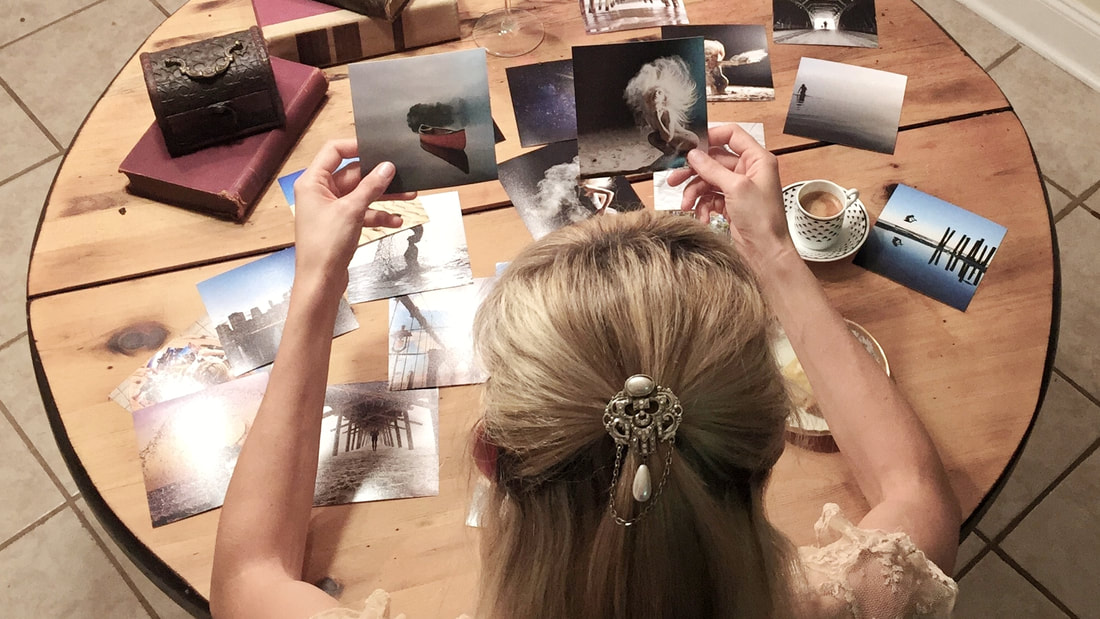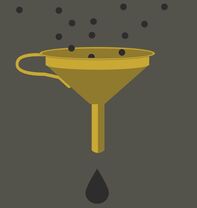 Social media freelance life ain't easy. Here are my top 5 productivity hacks for freelancers. 1. Keep your phone on do not disturb. Shut off all unnecessary notifications. Even if you are on your phone quite a bit, you’re not being distracted while focusing on a certain task. Most phones have a setting where you can select contacts who can get through even when your phone is on silent -- just be sure to keep the list short. 2. Set up email rules. You can limit the time you spend wading through your inbox by creating rules to send some emails to certain folders automatically (one of those folders being "Trash.") 3. Get a calendar link and add it to your email signature. This saves a lot of the back-and-forth communication about availability and meeting schedule. It allows people to just click a link and book you at a time that works for them. 4. Don't be afraid to say no. This is a big one. Be aware of your own limitations and priorities. Phrase your no objectively to minimize any hurt feelings. "My schedule won't allow for that" or "I don't have the resources to make that happen" are two phrases that tend to work well. 5. Outsource and delegate. Even if you can do something well, doesn't mean you should. Outsource in your personal and professional life. I'm pretty cheap, but this is a necessary expense and can actually increase your profitability when you do it properly. You have a limited amount of time; spend it on the activities that are the most important. What are some of your hacks?
2 Comments
 You may have read many a mocking article recently about an Instagram influencer named @arii who could not even sell 36 shirts to kick-off her fashion line. No, she is not a terrible influencer. No, the influencer marketing bubble did not burst. The reason why she couldn’t is simple: That’s just not how influencer marketing works. Making fun of an influencer for not generating immediate sales is like getting annoyed at the seed you just planted for not growing into a field of sunflowers overnight. “Well that didn’t work at all,” you say when you see a cup full of dirt in the morning. “Planting seeds is stupid. It’s a waste of time and money. And also who does that seed think it is, anyway?” Influencer marketing is mainly a top- to middle- of the funnel marketing activity, and it needs to be treated as such. Marketing is about taking your would-be customers on a journey with you. Top of the funnel: First make them aware you exist. Middle of the funnel: Build a reputation and identity for your brand. Nurture them along to the consideration phase. Bottom of the funnel: Then (and only then) you work on converting them into a customer. One of the best analogies I’ve heard about this process was when a marketing colleague asked me, “If I met you and asked you to marry me two minutes later, what are the chances you would say yes? I'd probably have a lot better chance after we dated a few years first.” Now, not all products require as much courting as a marriage proposal, but most products require the buyer go through all the phases I’ve listed above, and the time it takes them to graduate to the next phase is dependent on the product. Part of the problem is that many companies and people think of influencer marketing like the celebrity endorsements of the 90’s. Pepsi hired Cindy Crawford to be a spokesperson and then looked at how much sales increased to determine effectiveness. However, influencers on social media are not generally celebrities -- yes, there are some celebrities who engage in influencer marketing, and yes, some influencers have amassed some celebrity -- but generally speaking, influencer marketing works because their followers find them more relatable than a celebrity. There’s authenticity and trust baked into the relationship. The more salesy companies require their influencers to be, the more they break down that relationship they are trying to leverage. It's counterproductive. Another issue is that Instagram is not an ecommerce platform. People are not yet used to buying through Instagram. It’s not the Home Shopping Network. Influencer marketing works because people have several different touch points with a brand, develop an opinion on it over time, and eventually make their way down the funnel to the point where they go buy the product off of Amazon, or wherever they are used to shopping. They open Instagram to scroll through their feed, look at pretty pictures and laugh at some memes. It’s hard to entice someone to make an immediate switch into shopping mode, especially if they have to leave the app or get up for their credit card. Instagram is working on building shopping in, but we are not there yet. And Influencers: we are partly to blame for these misconceptions, too. Even many influencers themselves don’t understand this ecosystem and how it works. Influencers post the discount codes companies provide them and try selling to their followers, and some even get mad at their followers when they don’t click through. (Not a good look.) We must educate each other and our clients whenever possible. Still, influencer marketing can be and is extremely profitable, and many companies use it to great effect. Here’s how the winners are using it: as a broad, long-term strategy that involves a relationship with a number of influencers in a similar niche who post authentic, non-salesy content consistently. |
@crissibethBlogging my path as a professional photojournalist / social media addict / influencer Archives
June 2023
Categories |

 RSS Feed
RSS Feed